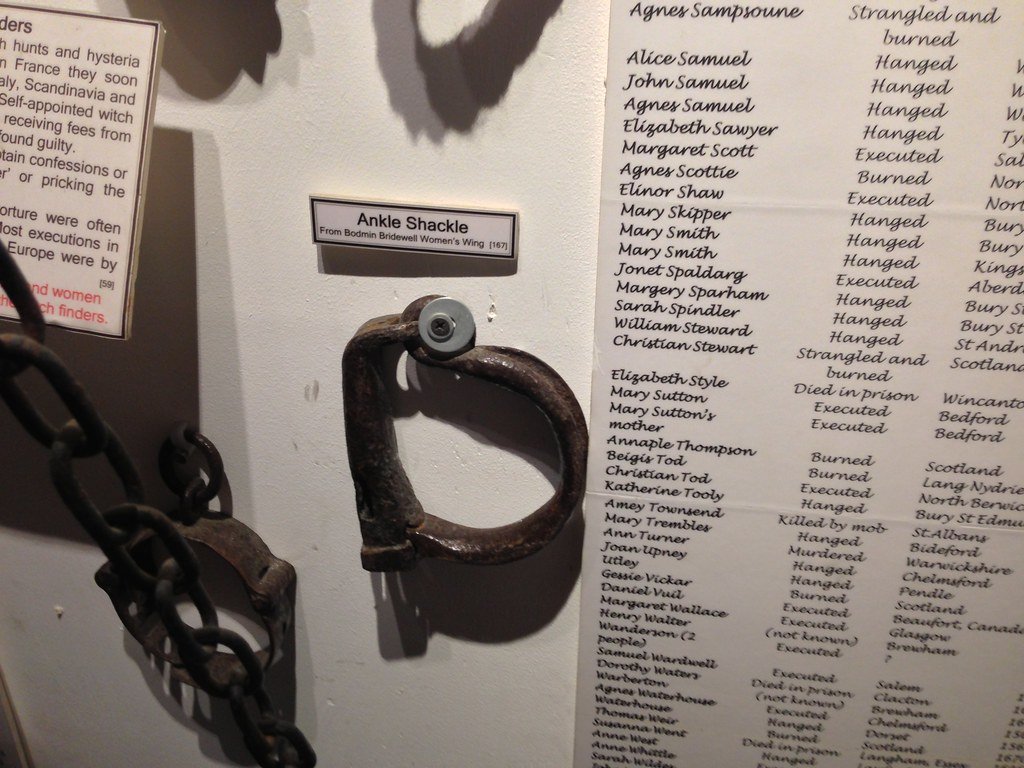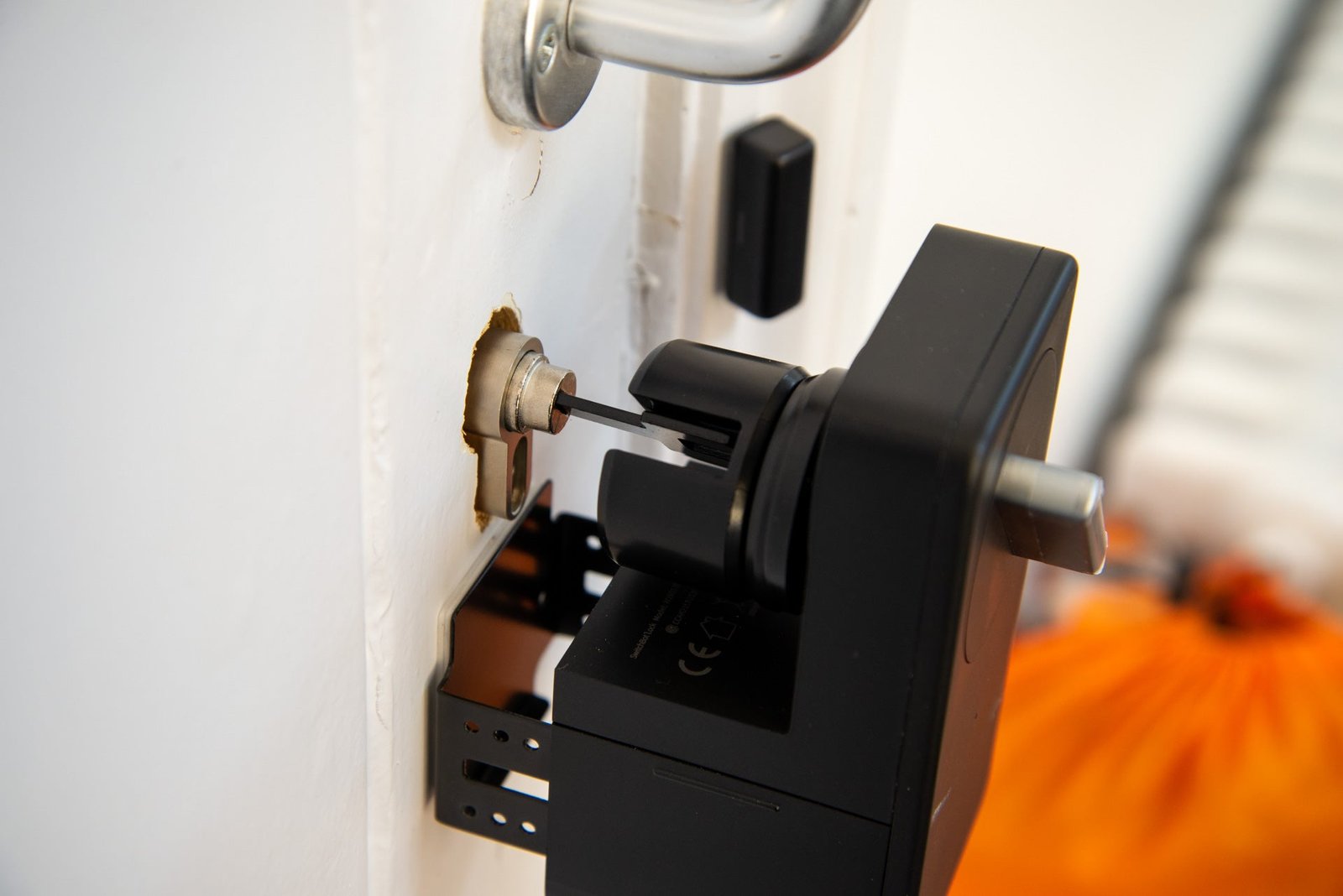Locked doors, secured cabinets, and impenetrable safes have long stood as bulwarks against unwanted intrusion. Yet behind these impregnable barriers lies a humble yet essential component that has been the cornerstone of lock mechanisms for centuries – the shackle. You may have encountered this unassuming metal loop, casually dismissing its significance, unaware of the vital role it performs in fortifying our prized possessions. Look closer, and you will discover a tale of resilience, ingenuity, and the indomitable spirit of human innovation. Journey with us as we delve into the captivating world of the shackle, unraveling its secrets, exploring its evolution, and unearthing the timeless artistry concealed within its robust embrace.
Table of Contents
- The Symbol of Security: Exploring the Significance of the Shackle in Lock Mechanisms
- Unveiling the Anatomy: Understanding the Inner Workings of the Shackle in Lock Designs
- Enhancing Lock Performance: Innovations in Shackle Materials and Design Features
- Choosing the Perfect Shackle: Factors to Consider for Optimal Lock Security
- Unlocking the Future: Recommendations for Developing Advanced Shackle Technologies
- Q&A
- In Retrospect

The Symbol of Security: Exploring the Significance of the Shackle in Lock Mechanisms
Lock mechanisms have long been an essential part of our lives, offering us a sense of security and peace of mind. Among the various components that make up these mechanisms, one symbol stands out: the shackle. Although seemingly simple and unassuming, the shackle plays a crucial role in ensuring the effectiveness and reliability of locks.
One significant aspect of the shackle is its strength and durability. Made from high-grade steel or hardened materials, the shackle acts as the first line of defense against unauthorized access. Its sturdy construction makes it resistant to cutting, sawing, and other forms of physical attacks. The shackle effectively keeps the lock in place, providing a formidable barrier that can withstand significant force.
Furthermore, the design of the shackle enhances its functionality. With a curved or U-shaped form, the shackle easily fits into the lock body, preventing any tampering or manipulation. The clever curvature of the shackle allows it to rotate freely, ensuring smooth unlocking and locking processes. This flexibility ensures convenience for users while maintaining the utmost security.
Considering the symbolic significance of the shackle, it embodies both strength and reliability – qualities that we all seek when it comes to safeguarding our belongings and loved ones. Whenever you see a lock with its shackle firmly in place, it serves as a visual reminder of the vital role it plays in preserving our security.

Unveiling the Anatomy: Understanding the Inner Workings of the Shackle in Lock Designs
Locks are intricate and fascinating security devices, where every component plays a critical role in safeguarding our belongings. One such component is the shackle, an important part of a lock’s structure that deserves our attention. The shackle serves as the gatekeeper, allowing access to the contents protected by the lock. Let’s delve into the inner workings of the shackle and unravel its hidden secrets.
At a glance, the shackle may seem like a simple curved metal piece, but its true complexity lies within. Made from hardened steel, the shackle consists of several key elements:
- Shackle Body: The main section of the shackle, usually rounded or U-shaped, that connects to the lock’s housing. Its robust construction enables it to withstand external forces.
- Shackle Bow: The curved part of the shackle that provides the clearance required to engage and disengage the lock. It’s through this space that a key, combination, or code interacts with the internal mechanism.
- Shackle Heel: Located opposite the bow, the heel completes the U-shape of the shackle. It contributes to the overall strength and stability of the lock.
The shackle’s resilience is further enhanced through a variety of specialized features, such as:
- Hardened Surface: The shackle is often hardened to resist cutting, drilling, or sawing attempts by potential intruders, ensuring maximum security.
- Shackle Diameter: Different locks have varying shackle diameters, which affect the lock’s overall strength. The larger the diameter, the more resistant it is to physical attacks.
- Shackle Clearance: The space between the shackle bow and heel is crucial, as it determines the lock’s compatibility with different key types. It is important to understand the shackle clearance requirements for a lock to ensure proper functionality.
By exploring the anatomy of the shackle, we gain a deeper appreciation for the intricate design and engineering behind locks. These seemingly small components hold the key to security, protecting our valuables with their well-thought-out mechanisms. So next time you encounter a lock, remember to acknowledge the vital role played by the shackle.

Enhancing Lock Performance: Innovations in Shackle Materials and Design Features
Locks have been used for centuries to secure valuable possessions and ensure peace of mind. As technology advances, the demand for stronger and more secure locks grows. One of the key areas of innovation in lock design is the development of new shackle materials and design features.
One exciting advancement in shackle materials is the use of hardened steel alloys. These alloys are incredibly strong and resistant to cutting, sawing, and drilling. By using hardened steel, locksmiths and manufacturers can create shackles that provide superior security and peace of mind. Combined with innovative design features such as enhanced shackle thickness and complex shapes, these locks are virtually impenetrable, making them a top choice for safeguarding valuable assets.
In addition to hardened steel alloys, another groundbreaking development in shackle design is the use of unique locking mechanisms. Some locks now feature biometric technology, allowing users to unlock them with their fingerprints or other forms of personal identification. This provides an extra layer of security, as the lock can only be opened by authorized individuals. Furthermore, lock manufacturers have also incorporated tamper-evident features into their designs, including built-in alarms or sensors that trigger if the lock is tampered with. These meticulous design features add an extra level of deterrence and protection, ensuring that the lock performs optimally in preventing unauthorized access.
In conclusion, the advancements in shackle materials and design features are revolutionizing lock performance and security. The use of hardened steel alloys, combined with innovative design elements such as biometric technology and tamper-evident features, ensures that locks provide unparalleled protection against theft and unauthorized access. With these innovations, individuals and businesses can have peace of mind, knowing that their valuable possessions are securely locked away.
Choosing the Perfect Shackle: Factors to Consider for Optimal Lock Security
When it comes to ensuring optimal lock security, choosing the perfect shackle is vital. The shackle, also known as the U-shaped metal piece of a lock, plays a crucial role in preventing unauthorized access. There are several factors that need to be considered before making this decision.
Type of Material: One of the first factors to consider is the type of material used for the shackle. The two common options are hardened steel and brass. Hardened steel is known for its strength and resistance to cutting, while brass offers excellent resistance to corrosion. Choosing the right material depends on your specific security needs and the environmental conditions the lock will be exposed to.
Diameter: The diameter of the shackle is another important factor to consider. A thicker shackle generally provides higher security as it is harder to pry or cut. However, keep in mind that a thicker shackle might not fit certain lock mechanisms or applications. It is essential to strike a balance between the shackle’s thickness and its compatibility.
Shackle Length: The length of the shackle is also worth considering. A longer shackle allows for more versatility, enabling the lock to secure larger objects or fit around unconventional structures. However, a longer shackle may also provide additional leverage for potential attacks. Evaluate your specific use case and choose a shackle length that provides both flexibility and security.
Locking Mechanism Compatibility: Finally, ensure that the shackle you choose is compatible with the locking mechanism you intend to use. Different locks have varying requirements for the shackle’s dimensions and design. Refer to the manufacturer’s guidelines or consult a professional if you are uncertain about the compatibility.
By carefully considering these factors, you can choose the perfect shackle that provides optimal lock security for your needs. Remember, the strength and reliability of the shackle are crucial in deterring and preventing unauthorized access, so take the time to make the right choice.
Unlocking the Future: Recommendations for Developing Advanced Shackle Technologies
Recommendations:
In order to develop advanced shackle technologies that meet the demands of the future, certain recommendations need to be taken into consideration. These suggestions aim to revolutionize the way we approach shackle designs, making them more secure, durable, and adaptable:
- Embrace Material Innovation: Exploring new materials, such as carbon fiber composites or shape-memory alloys, could lead to shackles with enhanced strength and lighter weight, without compromising on durability.
- Integration of Biometrics: Incorporating biometric technologies into shackle designs could provide an additional layer of security. Fingerprint or retinal scanners could be seamlessly integrated within the shackle, making unauthorized access virtually impossible.
- Implement IoT Connectivity: The inclusion of Internet of Things (IoT) connectivity in shackle designs opens up a plethora of possibilities. Real-time monitoring, remote access control, and improved asset tracking capabilities can greatly enhance the functionality and efficiency of the shackles.
- Enhanced Tamper-Resistance: Developing shackles that are resistant to tampering is crucial. Designing anti-picking mechanisms, tamper-proof sensors, and reinforced enclosures can deter potential intruders and prevent unauthorized access.
- Standardization and Certification: Establishing industry-wide standards and certification processes will ensure that advanced shackle technologies meet rigorous quality and security requirements. This will enable users to confidently choose the most reliable and trusted options.
By implementing these recommendations, we can unlock a future where advanced shackle technologies meet the ever-evolving security demands, ensuring the protection of valuable assets and providing peace of mind for individuals and businesses alike.
Q&A
1. What is the purpose of a shackle in lock mechanisms?
The shackle serves as the main securing component of a lock mechanism. It allows for the attachment of the lock to a fixed object or another component, providing the necessary resistance to prevent unauthorized access.
2. How does the design of the shackle impact the overall security of a lock?
The design of the shackle greatly influences the security of a lock. Factors such as its material, thickness, and shape affect resistance to cutting, tampering, and picking, making it a crucial component in ensuring the lock’s effectiveness.
3. Can the shackle be vulnerable to attacks?
While shackle designs aim to maximize security, they may still have weaknesses. Certain techniques may exploit vulnerabilities in the material or design of the shackle, enabling unauthorized access. Consult a professional locksmith to ensure the optimum security of your lock mechanisms.
4. Are there different types of shackles used in locks?
Yes, there are various types of shackles that cater to different security needs. Some common ones include U-shaped shackles, D-shaped shackles, and long shackles. Each type offers different levels of protection and suits specific applications or environments.
5. How does the choice of shackle material affect the lock’s durability?
The choice of shackle material has a significant impact on a lock’s durability. Materials such as hardened steel or alloys with excellent resistance to cutting, corrosion, and physical attacks enhance the lock’s lifespan and overall security.
6. Are there any alternative materials or innovations used for shackles?
Lock manufacturers are constantly researching and implementing new materials and technologies. Some innovative examples include boron carbide shackles, titanium alloys, or even smart-lock systems. These advancements aim to enhance the strength, durability, and functionality of shackles within lock mechanisms.
7. Can a lock function properly without a shackle?
No, a shackle is essential for the proper functioning of a lock. The absence of a shackle would render the lock mechanism useless, as there would be no means to secure it to an object or engage the locking mechanism.
8. How can regular maintenance help the longevity of the shackle?
Regular maintenance ensures that the shackle remains in optimum condition, preventing rust, wear, and tear. Applying lubricants, inspecting for any signs of weakness or damage, and cleaning regularly help extend the lifespan of the shackle and ensure the lock’s continued security.
In Retrospect
As we bid farewell to the enchanting world of lock mechanisms and the pivotal role played by the humble shackle, we find ourselves brimming with newfound appreciation for this unassuming hero. In this journey, we unraveled the intricate dance of engineering and craftsmanship that brings security and peace of mind to our lives.
Like a silent guardian, the shackle stands tall, guarding our sanctuaries from untoward forces. Its birth, born out of necessity, bestowed upon us more than just a simple tool. Embedded within its steel core is a centuries-old tale of human desire to protect what we hold dear.
From the shackles of our imagination, we ventured through dusty archives, exploring ancient writings and unlocking secrets long forgotten. We met the ancient Egyptians, who ingeniously designed wooden pin-tumbler locks adorned with shackles of their own. The echoes of their craftsmanship whispered in our minds, reminding us that the shackle we know today is not just a product of modern ingenuity but a testament to the wisdom of time.
Our journey took an unexpected turn as we delved into the mesmerizing world of padlocks. What we discovered was a symphony of strength and finesse, where the shackle dutifully connects body and key, ensuring that only the rightful bearer shall gain entry. With each poetic click and turn, we encountered the ardent dance of mechanical precision that protects our most cherished possessions.
But the shackle’s allure extends beyond the physical realm. It symbolizes more than an itinerant piece of metal entwined in security; it is the embodiment of trust. As it embraces the lock, it assures us that our secrets will be kept safe. It is a testament to the irrefutable bond between humans and their desire to safeguard what matters most.
So, as we bid adieu to the remarkable journey we embarked upon, let us carry with us a newfound reverence for the shackle. It is a beacon of security, an emblem of trust, and an unwavering sentinel guarding the doors to our serenity. The role of the shackle in lock mechanisms shall forever remain etched in our minds as an exquisite saga of protection, reminding us of the enduring connection between artistry, engineering, and the unyielding pursuit of safety.
As an affiliate, my content may feature links to products I personally use and recommend. By taking action, like subscribing or making a purchase, you’ll be supporting my work and fueling my taco cravings at the same time. Win-win, right?
Want to read more? Check out our Affiliate Disclosure page.